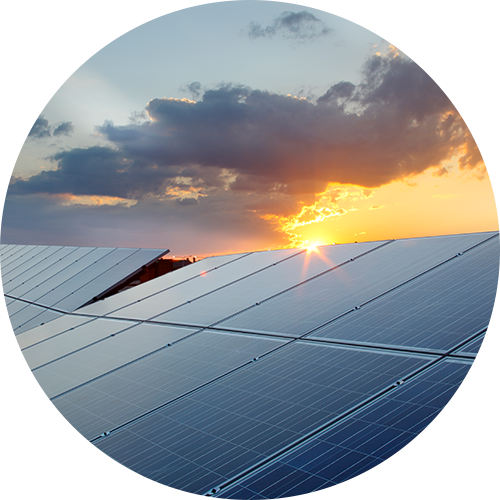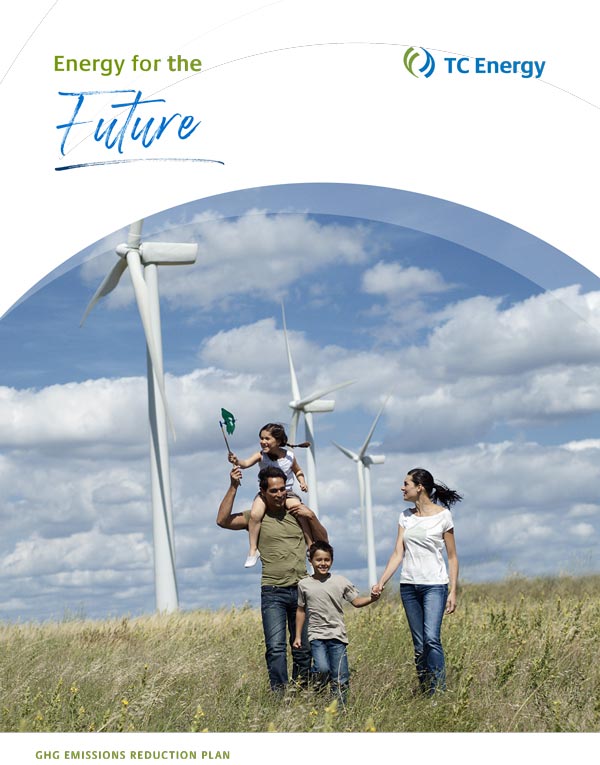Energy for the

The evolving energy transition supports society’s climate related goals by reducing energy-related greenhouse gas (GHG) emissions and incorporating low-carbon fuels and infrastructure into the energy system. We are playing a proactive role to support positive change – embracing the energy transition that is underway and contributing to a lower-carbon energy world.
Our GHG Emissions Reduction Plan
We have set ambitious greenhouse gas (GHG) emissions reduction targets including:
30% by 2030
Reduce GHG emissions intensity from our operations 30% by 2030.
Net zero by 2050
Position to achieve zero emissions from our operations, on a net basis, by 2050.
These targets address Scope 1 and 2 emissions, using a 2019 baseline year for planning purposes.
Our GHG Emissions Reduction Plan outlines our strategies to work towards these goals, while also developing next-generation energy solutions for the future.
Our roadmap to 2050
We intend to work towards our goals through a variety of strategies across our business units. We are working with customers and other partners within our industry, fostering innovation, and investing in research and development. We are adopting emerging technologies as they evolve, to drive safe, reliable and sustainable operations.
Beyond our own direct emissions, we are developing infrastructure and services that help decarbonize the energy system and reduce the full lifecycle GHG emissions of the energy we deliver. For example, we will continue to assess and progress opportunities to transport renewable natural gas and hydrogen, develop renewable power projects, develop carbon capture, utilization and storage (CCUS) infrastructure, and develop other low-carbon technologies such as pumped hydro power storage.
Modernize our existing systems and assets
Reduce fugitive methane emissions, leaks, venting and flaring associated with regular operations and maintenance, and improve overall operational efficiency.
Decarbonize our energy consumption
Seek low-carbon energy sources to support our operations.
Invest in low-carbon energy and infrastructure
Develop a broad range of new low-carbon energy solutions for today and for the future.
Drive digital solutions and technologies
Develop and deploy software and systems to digitize our operations and monitor emissions – includes system automation, AI and machine learning applications.
Leverage carbon credits and offsets
Evaluate and leverage carbon offsets and assess opportunities to develop nature-based solutions.

Building on strong foundations
Throughout our 70-year history, our people have found innovative solutions to the energy challenges of the day. We have been working towards emissions reduction for over two decades and have more than 15 years’ experience with renewables and lower-carbon infrastructure. We are continually learning, collaborating with industry partners, investing in technology, and evolving to ensure our business remains sustainable. These are strong foundations to build from.
Oil Pipestream is a signatory to the Methane Guiding Principles, which focus on actions to reduce methane emissions across the natural gas supply chain.
We are collaborating with industry groups on methane reduction initiatives including:
- Interstate Natural Gas Association of America (INGAA) ONE Future Coalition
- U.S Environmental Protection Agency’s (EPA) Natural Gas STAR program
- Canadian Energy Partnership for Environmental Innovation (CEPEI)
- Canadian Emissions Reduction Innovation Consortium (CanERIC), an initiative of the Petroleum Technology Alliance Canada (PTAC)
We have committed $75 MILLION to venture funds developing clean energy technologies – Energy Impact Partners (EIP) in the U.S. and NGIF (Natural Gas Innovation Fund) Cleantech Ventures in Canada.
We are a founding member of the Emerging Fuels Institute established by the Pipeline Research Council International (PRCI) in 2021.

